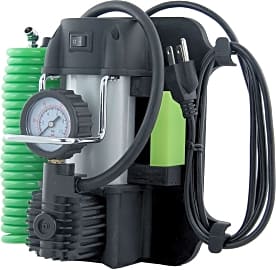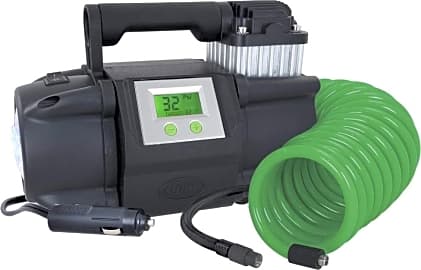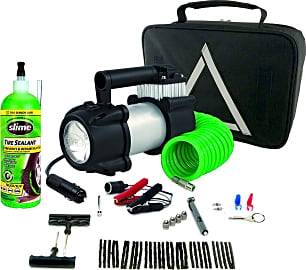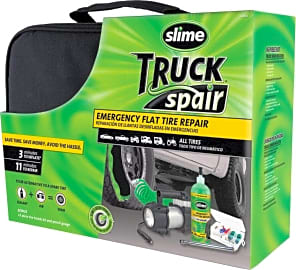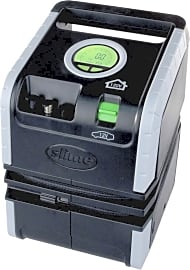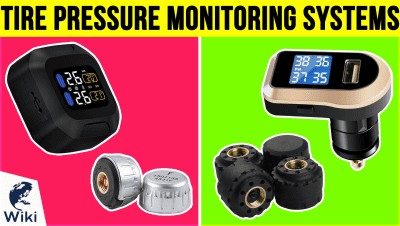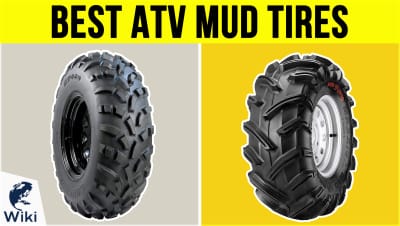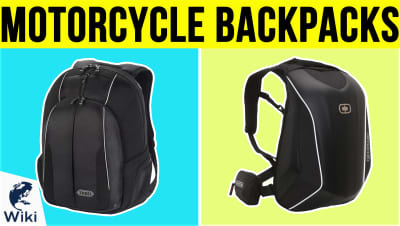The 10 Best Slime Tire Inflators

This wiki has been updated 34 times since it was first published in March of 2017. If you take care of your tires, they'll take care of you - saving you money on fuel costs, helping your car handle better, and keeping you off the side of the road. That's why you need a good inflator, and Slime is a company that has a well-deserved reputation for making them. The choices on this list are the cream of their crop, and include both portable and in-garage options. When users buy our independently chosen editorial picks, we may earn commissions to help fund the Wiki.
Editor's Notes
October 12, 2020:
Our latest revision of this ranking includes the 40052 Dual Power, as it can be used in the home, or as a mobile charger in your vehicle. While it is sturdy and fairly compact, those who wish to permanently keep an inflator in their car might opt for the smaller 40050 Portable, 50107 Flat Tire, or the 40051 Digital models.
We have also included a couple of powerful models in the 50063 Truck Spair and 40063 Elite Heavy-Duty. While these are also suitable for smaller cars, their high output makes them ideal for larger vehicles such as heavy goods carriers and SUVs, but again, their increased size might make them better-suited to commercial use, or for topping up tire pressure at home.
Finally, we added the 40061 Power Sport, which is a little more niche than the other models in the ranking, in that it is designed for use with off-road vehicles, such as ATVs, SUVs, mountain bikes, dirt bikes, etcetera. Anybody who enjoys this type of pursuit would benefit from one of these models, as traveling on unpaved surfaces is particularly demanding on tires and tire pressure is lost more easily.
March 01, 2019:
We removed the 40031 Pro Power after hearing reports that the motor got very hot and sometimes even melted the hose. While it was originally ranked due to its power, that wasn't enough to overcome the potential safety issue. In its place, we inserted the 40001 Motorcycle, which is one of the most convenient and effective solutions we've seen for riders of two-wheelers — it may not be much to look at, but it flat-out works (no pun intended). The 40051 Digital earned our #1 ranking because it's powerful and simple, so even someone who's completely ignorant about cars can use it to free themselves from a bad situation.
A Brief History Of Tires
Dunlop had one big advantage over Thompson, which is that the vulcanization of rubber had been created by the time Dunlop began experimenting.
Moments after the wheel was invented, some joker probably came along and said, "That's great — but wouldn't it be better if it had a hat?"
OK, so that's probably not how tires were born, and while we may not know exactly how they came about, they've definitely been around for a long time. The earliest incarnations were strips of leather or iron that were fixed to wagon wheels.
Modern pneumatic tires, on the other hand, have a clear birth date. The first prototype was created by Scottish inventor Robert William Thompson in 1847, but it was never produced on a large scale. However, one of his countrymen, John Boyd Dunlop, would take the idea and run with it (er, well, bike with it).
Dunlop had a son who suffered from severe headaches, and so he hoped to invent something to ease the shocks the boy suffered when riding his tricycle on bumpy streets. He developed a pneumatic tire that was soon mass-produced for bicycles.
Dunlop had one big advantage over Thompson, which is that the vulcanization of rubber had been created by the time Dunlop began experimenting. This process improved the rubber's strength and durability, while also reducing its reactivity to solvents and its tendency to absorb water.
This was good, because in 1886, the first gasoline automobile was invented — and it needed tires. The clincher rim was created around the same time, which helped hold the tire in place even at high speeds over rough ground.
Tires at this time were all made with a tube filled with compressed air that was then ensconced inside a rubber casing. Layers of rubberized fabric, called plies, were wrapped around the casing, which is why they were called bias ply tires.
Michelin developed an alternative to bias ply tires in 1946: radials. These new models allowed for superior handling and vastly improved fuel efficiency, and they dispensed with the inner tube, thereby reducing the occurrence of flats. In the 1980s, run-flat versions were released, enabling drivers to maintain control of their vehicle in case of a blowout.
Today's tires are designed to maximize fuel efficiency, respond to hazardous conditions, and provide trusty service for tens of thousands of miles. Many models are even doing away with using air, choosing instead to utilize a hydrogen mixture that will further increase your miles per gallon.
While tires may not be the most interesting things in the world, they've been instrumental in transforming transportation over the last century or so.
Choosing The Right Tire Inflator
With so many tire inflator options to choose from, how do you know which model to buy?
It's important to realize that they're not all necessarily designed for the same purpose. Some are small enough to keep in your trunk or in the backpack you wear while riding your motorcycle, while others are intended for garage use — these usually come with wall plugs instead of adapters for your cigarette lighter or hookups for your car battery.
With so many tire inflator options to choose from, how do you know which model to buy?
The kits have different accessories included, as well. Many models only come with the machine and maybe a stem adapter or two, while others have full-on repair kits inside. Obviously, the ones with more accessories will be more expensive, but you likely don't need all those bells and whistles unless you plan on fixing a punctured tire yourself.
The gauges aren't always the same, either. While most have analog dials, you'll find a few with digital readouts. This is mainly a personal preference, unless it's critical that you know the tire's exact PSI, in which case the digital option is a better choice.
Finally, they're not all capable of putting out the same amount of power, so make sure that whichever one you buy is heavy-duty enough for your purposes, especially if you're doing something like filling up over-sized truck tires. Some even have multiple air cylinders to give you the most power possible.
Regardless of which one you pick, you'll be prepared for just about any emergency.
Benefits Of Keeping A Tire Inflator In Your Car
Modern tires are much more resistant to getting flats than their ancestors, but that doesn't mean they're invincible. If you ever do have a flat, though, you can rest assured that it will come at the worst possible time, so it's a good idea to keep a tire inflator in your trunk.
You can get quite a bit of mileage out of them during a camping trip or picnic, as they make airing up balls, rafts, and other inflatable toys a breeze.
Of course, you should realize that if you have a complete blowout, an inflator isn't going to help you — you're going to have to either get your jack out or call a tow truck. Also, many modern cars don't even have spares anymore, so you might not be able to change your tire even if you wanted to. Inflators are just for tires with slow leaks or punctures that you can repair yourself.
However, if you're doing some last-minute Christmas shopping and just want to get out of the snow, getting a flat tire can really rob you of the holiday spirit. If you pop out your inflator, though, you can be aired up and ready to go in minutes, rather than having to wait hours in the cold for help to arrive.
You don't need to be a seasoned mechanic to work one of these, either. Most are incredibly simple — just hook up the cord to your power source, then attach the hose to the tire stem.
Even better, they're not only useful in emergencies. You can get quite a bit of mileage out of them during a camping trip or picnic, as they make airing up balls, rafts, and other inflatable toys a breeze.


